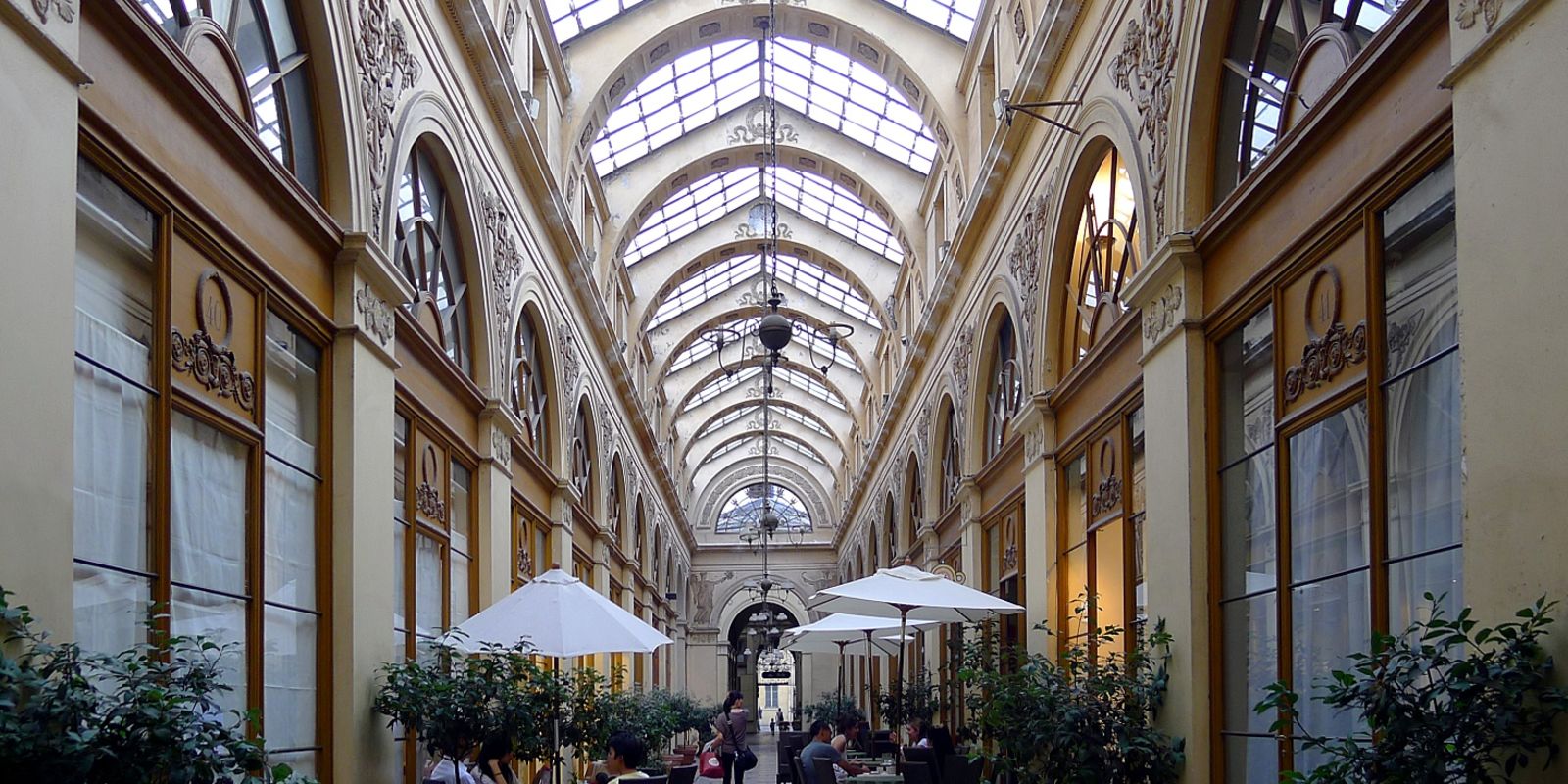Itinerary
Let’s go shopping and having fun in a district as lively as it is full of history.

This itinerary will plunge you deep into a busy, full-of-life district, nonetheless gifted with historical monuments galore.
We wanted it not to be too long – much more of a pleasant walk with various little things to spot to make it even more interesting – but you may choose to extend it in a lot of ways, having a meal, a drink or a tea, going shopping at the Vivienne Gallery, following a guided visit of the National Library, or even seeing a movie in a fabulous and unusual theater.
The cloth manufacturer district is obviously more lively on week days than on weekends, but the itinerary will hopefully provide you with varied enough experiences for this to not matter much.
8 stops
1. National Library of France, Richelieu Library
Although the “BnF” main site is now the François-Mitterand Library in the XIIIth district, Richelieu Library, build in the XVIIth century, is the historical location of the National Library. Temporary exhibitions are regularly organized, but if you can, try one of the thursday’s guided visits. This will allow you to see, among other things, the huge Labrouste study hall (see picture).
2. Vivienne Gallery
This famous covered passageway, located between Place des Victoires, the French National Library and the Palais-Royal Garden, opened in 1826 under the name of its commissionner, Marchoux. It was a time where such places, allowing to shop while sheltered from the rain, were quite popular.
The three entrances to the Gallery are : 6, Vivienne street ; 5, de la Banque street ; and 4, des Petits-Champs street.
At the number 13 of the Gallery, one can admire a big staircase with a wrought iron ramp. It was François Vidocq’s, a former convict who became chief of police between 1811 and 1827, house in the late part of his life.
There are a few masonic symbols throughout the Gallery. One in particular, at the entrance of… But wait, we won’t tell you which entrance, will we ? Tip : it is a symbol of fraternity.
3. Notre-Dame-des-Victoires Basilica
This basilica is well-known for its collection of 3 ex-voto (offerings left there by the faithful), mostly devotional plaques. 95% are in French. Some are as big as 1 square meter.
The Blessed Mother is notably prayed at the basilica.
4. Jean-sans-Peur Tower
This fortified tower was build between 1409 and 1411 by Duke Jean Ier de Bourgogne, also known as Jean sans Peur. His was trying to protect himself from retaliation after having murdered Louis d’Orléans, the king’s brother, in 1407.
Its spiral staircase’s vault is ornamented with a stunning vegetal decoration. Nowadays, the tower is part of the yard of an elementary school.
Did you know Jean-sans-Peur created, in 1406, the Order of the Hops, and contributed to set this ingredient as the main flavor or beer ? He eventually was murdered in 1419 by the Armagnacs, who pledged allegiance to the d’Orleans family.
5. Passage du Caire
Located in the heart of the Sentier (a cloth manufacturer district bordered west by du Sentier street, east by de Sébastopol boulevard, north by both Poissonnière and Bonne-Nouvelle boulevards and south by Réaumur street), The Passage du Caire is Paris longest passageway, as well as the oldest (1798). It is also quite thin. It was build with a rather low profile to keep rents at a reasonable level, and to attract cheap shops.
Its main interest is the exterior facade of its Place du Caire entrance, with its full set of egyptian symbols such as columns, hieroglyphs, and three heads of the goddess Hathor.
Somewhere on the facade of 2, Place du Caire, hidden among the egyptian symbols, is a caricature of Henri Bougenier, a XIXth century painter, whose nose was… huge. Will you be able to find it ? Tip : get a high-zoom lens and look up. Many drawings of this big nose were made in Paris, probably after a quarrel, by fellow painters of Bougenier.
6. Des Degrés Street
Only 5.75m long (and 3.30m wide), this is the shortest parisian street, located in the Bonne-Nouvelle district between Cléry and Beauregard streets. It is in fact a 14-steps stairs.
7. Le Grand Rex
Le Grand Rex is the largest cinema, theater and music venue in Paris. An atmospheric theatre, the cinema features a starred “sky” overhead, as well as interior fountains. The cinema is a landmark of Art Deco style architecture. It features the largest screen in Europe, called grand large.
The theatre was built for Jacques Haïk, a wealthy film producer, and designed by Auguste Bluysen, a French architect. John Eberson, a Romanian-American, served as a consulting architect.
Construction began in 1931, and the theater opened its doors the following year on the night of December 8. A French government decree on the 5 of October 1981 listed the Cinéma Rex, its interior decor and facades, as a “Monument National”.
Source : Wikipedia contributors, “Le Grand Rex“
8. Café du Croissant (Taverne du Croissant)
The Café du Croissant, at the corner of Montmartre and du Croissant streets, if known for being the place where Jean Jaurès was murdered by Raoul Villain on July 31, 1914. It has been renamed Taverne du Croissant in August 2011, after being restored.
RiddlesLeisure
Map, navigation, practical information, extra pictures and more are available on the Paris Parcours app.
